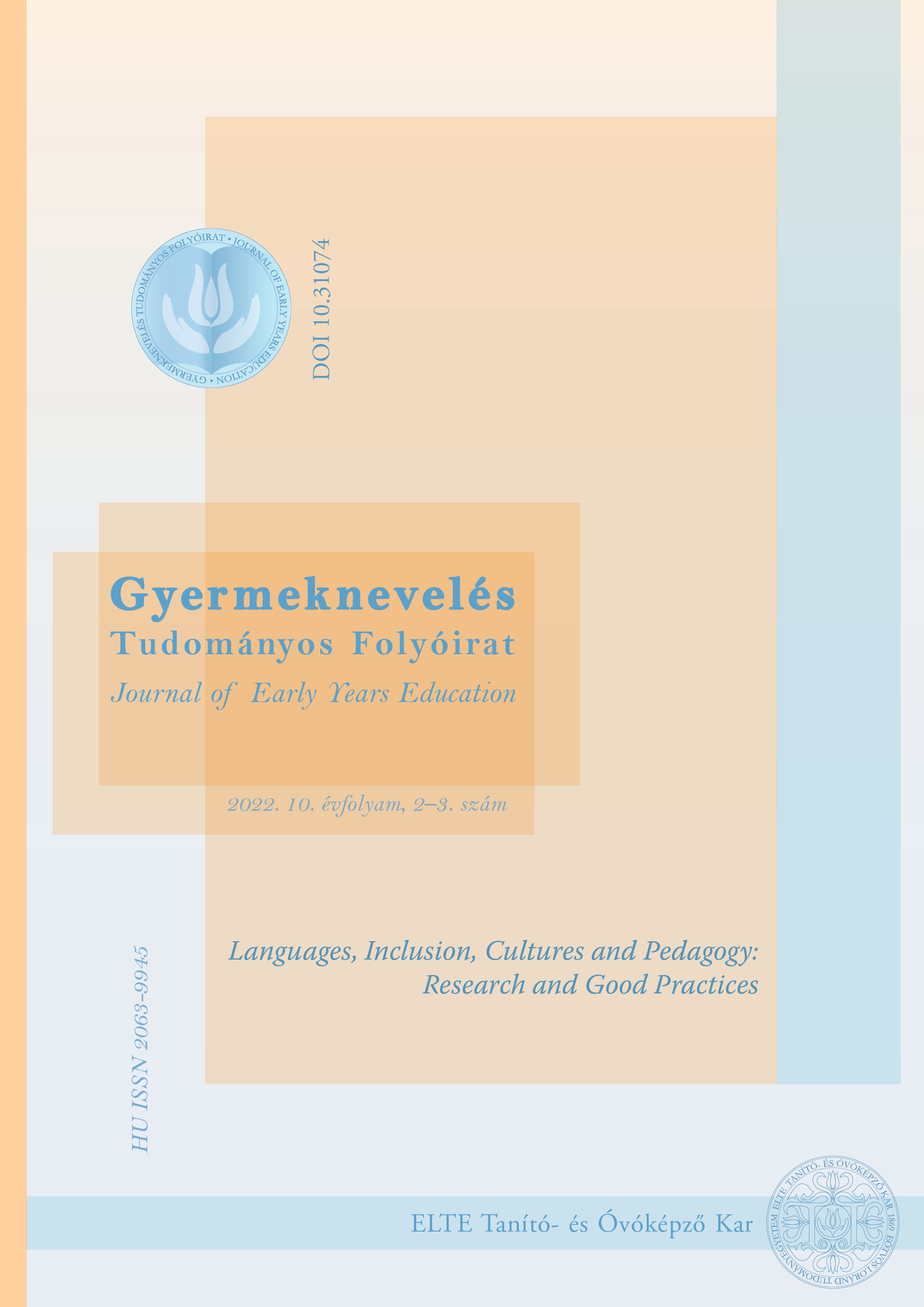Ten months around the world
DOI:
https://doi.org/10.31074/gyntf.2022.2.192.203Keywords:
English as a Second Language (ESL), foreign language acquisition (FLA), early childhood, bilingualism, study programAbstract
For a Bilingual Generation (FBG) is a new emerging enterprise promoting English language acquisition in the early years of childhood education. During their ten- month-long programme, the teachers and children travel around the world and visit the main English-speaking countries where they discover and learn about the local culture, flora and fauna. Studying different countries not only enriches and makes an ESL activity a more entertaining and better experience for the children, it also allows children to observe and marvel at the world’s beauties. By the end of the ten months, it is expected that the programme participants will learn to respect other cultures and accept otherness. To this end, the programme encourages children to be curious and open to new experiences. Not only about foreign language acquisition, FBG also provides a complex approach to personality development that takes place in English.
Downloads
References
/2003. (XII. 17.). Korm. rendelet a Nemzeti alaptanterv kiadásáról, bevezetéséről és alkalmazásáról.
Asher, J. J. (1969). The Total Physical Response Approach to Second Language Learning. The Modern Language Journal, 53(1), 3–17. https://doi.org/10.1111/j.1540-4781.1969.tb04552.x
Bajzát, T. (2013). Milyen mértékben és hogyan fejleszthető az interkulturális kommunikáció az angolórán a tankönyveken keresztül? In Gecső, T. & Sárdi, C. (Eds.), Az interkulturális kommunikáció elmélete és gyakorlata. (pp. 20–25.). Tinta Könyvkiadó.
Bajzát, T. (2014). Az interkulturális kommunikatív kompetencia fejlesztési lehetőségei a felsőoktatásban. In Torgyik, J. (Ed.), Sokszínű pedagógiai kultúra (pp. 408–413). International Research Institute.
Brown, D. H. (1980). Principles of Language Learning And Teaching. TESOL Quarterly, 14(2). https://doi.org/10.2307/3586319
Burton-Hill, C. (2015. June 11). The dark side of nursery rhymes. BBC.com. https://www.bbc.com/culture/article/20150610-the-dark-side-of-nursery-rhymes
Byram, M. (1997). Teaching and Assessing Intercultural Communicative Competence. Multilingual Matters.
Byram, M., & Morgan, C. (1994). Teaching and learning language and culture. Clevedon: Multilingual Matters.
Caruana, W. (2013). Aboriginal Art. Thames & Hudson.
Chastain, K. (1988). Developing second language skills: Theory and practice. Harcourt Javanovich Press.
Edelenbos, P., Johnstone, R. & Kubanek, A. (2006). The main pedagogical principles underlying the teaching of languages to very young learners. Languages for the children in Europe: Published research, good practice and main principles. European Commission Report. http://ec.europa.eu/education/policies/lang/doc/youngsum_en.pdf
EMMI Oktatásért Felelős Államtitkárság. (2012). A nemzeti idegennyelv-oktatás fejlesztésének stratégiája az általános iskolától a diplomáig - Fehér könyv 2012 – 2018.
Estes, A. (1996). A Field Guide to African Wildlife.Alfred A. Knopf.
Fuld, J. (2000). The Book of World-Famous Music: Classical, Popular, and Folk. Courier Dover Publications.
Holló, D. (2008.). Értsünk szót! Kultúra, nyelvhasználat, nyelvtanítás. Akadémiai Kiadó.
Kovács, J. & Trentinné Benkő, É. (2016). The world at their feet. Children’s Early Competence in Two Languages through Education. Eötvös József Könyv- és Lapkiadó Bt.
Kramsch, C. (1993). Context and Culture in Language Teaching. Oxford University Press.
Kumaravadivelu, B. (2003). Beyond Methods: Macrostrategies for Language Teaching. Yale University Press.
Magnuczné, G. Á. (2015). Az interkulturális tudatosság fejlesztése az angol nyelv-tanári képzésben. Alkalmazott Nyelvészeti Közlemények, 10(1), 179–192. https://matarka.hu/koz/ISSN_1788-9979/vol_10_no_1_2015/ISSN_1788-9979_vol_10_no_1_2015_179-192.pdf
Márkus , É. & Trentinné Benkő, É. (2014, Eds.). A korai idegennyelvi fejlesztés elmélete és gyakorlata: Konferenciaelőadások és háttértanulmányok. ELTE Eötvös Kiadó.
Morvai, E. & Poór, Z. (2006). Korai nyelvoktatás a magyar oktatási intézményekben. Oktatási Minisztérium.
Nikolov, M. (2016). Trends, issues, and challenges in assessing young language learners. In Nikolov, M. (Ed.) Assessing young learners of English: Global and local perspectives (pp. 1–17.). Springer. https://doi.org/10.1007/978-3-319-22422-0_1
Nikolov, M. & Timpe-Laughlin, V. (2021). Assessing young learners’ foreign language abilities. Language Teaching, 54, 1–37. https://doi.org/10.1017/S0261444820000294
OECD (2012). Educational Research and Innovation Languages in a Global World Learning for Better Cultural Understanding: Learning for Better Cultural Understanding. OECD Publishing.
Pont HU (2019. February 27). Módszertani továbbképzésünk: Kultúra és nyelv egysége a nyelvórán. Hungary. https://ponthu.blog.hu/2018/05/05/rolunk_438
Szepesi, J. (2016). A multikulturalitásra, interkulturalitásra nevelés megjelenése az angolórákon 1–6. osztályig. Gyermeknevelés Tudományos Folyóirat, 4(1), 102–116. https://doi.org/10.31074/gyntf.2016.1.102.116
Additional Files
Published
How to Cite
Issue
Section
License
Copyright (c) 2022 Author

This work is licensed under a Creative Commons Attribution-NonCommercial-ShareAlike 4.0 International License.

